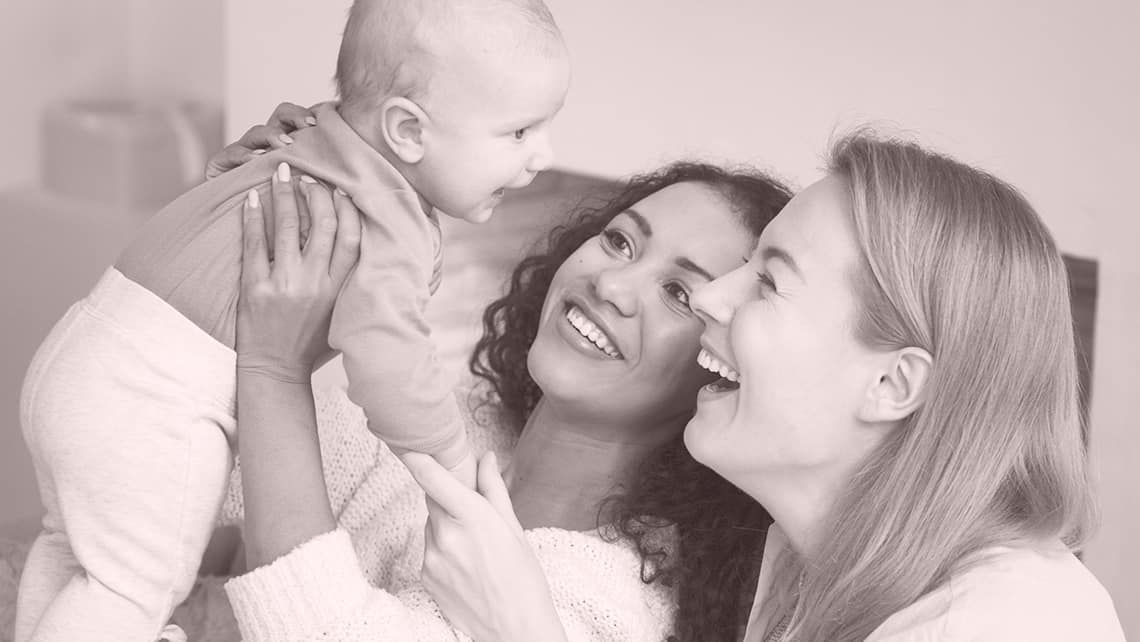
Shared motherhood for female couples
Índice
Shared motherhood in female couples is a process in which both women have the opportunity to actively participate in the child’s conception, pregnancy and upbringing. This is possible thanks to assisted reproduction techniques, such as artificial insemination or in vitro fertilisation with donor sperm or egg donation, which allow one of the women to provide the egg and the other the uterus for the baby’s gestation.
In some cases, shared motherhood may also involve the joint adoption of a child. In this case, both women legally become the child’s mother and share responsibility for the child’s care and upbringing.
Shared motherhood in female couples may be an option for all those women who wish to have a baby and wish to share the experience and responsibility of motherhood. However, it is important to note that this can be a costly and emotionally demanding process and, in some cases, may require the intervention of an assisted reproductive specialist.
In addition, shared motherhood may also have legal and social implications, especially in countries where marriage or adoption by same-sex couples is not yet recognised. It is therefore important for female couples to research and understand the legal and social implications before embarking on a process of shared motherhood.
ROPA (Reception of Oocytes from the Partner) method is an option for shared motherhood in female couples, which allows both women to actively participate in the process and pregnancy.
This method is based on in vitro fertilisation, in which oocytes are removed from one of the women (the genetic mother) after undergoing ovarian stimulation and egg fertilisation in the laboratory with donor sperm. The resulting embryos are transferred into the uterus of the other woman (the gestational mother), who carries the pregnancy and delivers the baby.
The ROPA method allows both women to have direct participation in the conception and pregnancy process. The genetic mother provides the eggs, which means the baby will have her genetic material, while the gestational mother will carry the pregnancy and will have the opportunity to experience the changes and emotional bonding that occur during pregnancy.
This method can also be beneficial for couples in which one of the women has fertility problems or is unable to carry a pregnancy to term due to medical problems. In such cases, the other woman can provide the oocytes and in vitro fertilization is performed with donor sperm.
Selecting the best embryo is an important process in the ROPA method and can increase the chances of a successful pregnancy. Here are some factors that can help in choosing the best embryo:
- Morphological evaluation: Embryo shape and size evaluation is one of the key factors when selecting the best embryo. Embryos with a uniform and well-defined shape and size are generally considered to be of better quality.
- Development speed: The time it takes for an embryo to reach a certain point in its development can be an indicator of its quality. Embryos developing faster may indicate better quality.
- Genetic screening: Embryo’s genetic screening can help determine whether it has a higher chance of success. Genetic screening can be done through pre-implantation genetic testing (PGT).
- Mother’s age: The mother’s age can also be a factor in the selection of the best embryo. Younger women have a higher pregnancy success rate with the selected embryos.
- Cell number: The number of cells in an embryo can be an indicator of its quality. Embryos with a uniform number of cells are generally considered to be of better quality.
- Culture environment evaluation: The embryo culture environment may also be a factor when selecting the best embryo. Embryos cultured in an optimal environment may have higher pregnancy success rate.
In short, selecting the best embryo is a complex process and is based on a variety of factors. It is important to work with a team of experienced and qualified healthcare professionals to ensure that all relevant factors are considered in the selection of the best embryo to increase the chances of a successful pregnancy.
Dr María del Mar Pérez (collegiate number 020204222), gynecologist at Instituto Bernabeu
